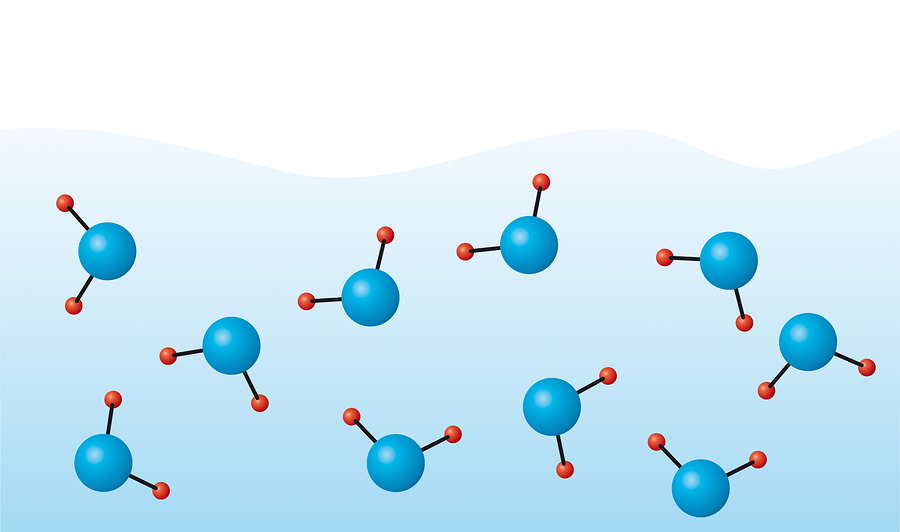
Scientists are calling the new state "quantum spin liquid," which occurs when water molecules are confined.
Water molecules have always had three states: solids, liquids and gasses. Physicists have now discovered a fourth state of matter, and they aren’t sure exactly what it means, although they all agree it is a major discovery.
Scientists from the Department of Energy’s Oak Ridge National Laboratory made the discovery, which they are calling “quantum spin liquid,” a state that water molecules exist in during conditions of extreme confinement. During these conditions quantum effects take over, abandoning the usual rules of physics.
Scientists had predicted the existence of a fourth state of matter in certain magnetic materials 40 years ago, but have never been able to find evidence of it in nature. Finally they have spotted it in a two-dimensional, graphene-like material.
The physicists in the study literally squeezed the water molecules into the fourth state of matter by forcing them into tiny channels in the mineral beryl. The channels were only 5 angstroms across, equivalent to about 1 ten-billionth of a meter. The scientists say such confinement should be fairly common nature, occurring in environments such dirt, mineral interfaces and cell walls.
Recall that water molecules are made from two hydrogen atoms and one oxygen atom, each only about 1 angstrom across. According to Motherboard, once the molecules are trapped in the 5-angstrom-wide channels the water molecules become “delocalized,” and start to show tunneling behavior. Entering the quantum world the atoms in the water molecule have the ability to exist in multiple states at once.
At this point weird part begins. Usually the atoms in a water molecule are grouped in a sort of V-shape, with the two hydrogen atoms forming the top of the V and the oxygen atom at the bottom. Not in a beryl cavity. In the environment of quantum physics the hydrogen atoms of the water molecule develop six different symmetric orientations around the oxygen atom, forming a sort of ring.
In other words, the hydrogen atoms form rings of fuzzy “peaks” surrounding a central oxygen atom, rather than jutting out like antenna. They exist in a suspended average of all possible orientations, and result in increasing temperatures as the hydrogen atoms tunnel between their different possible configurations.
The ORNL physicists observed this phenomenon using neutron scattering, in which neutrons probe subatomic structures, a necessary imaging technique for observing material properties at atomic scales. Optical and X-ray imaging only look as far as electrons and photons.
One of the very interesting things about this fourth state of water molecules is that, once they are in this new configuration, the atoms lose their electrical dipole movement, which causes the molecule to be more negatively charged at its oxygen corner, and more positively charged on the side containing the hydrogen atoms. Once that dipole movement is lost, the molecule no longer bonds with other atoms/molecules, meaning water is no longer the “universal solvent.”
The discovery was published April 22 in the journal Physical Review Letters.

Leave a Reply